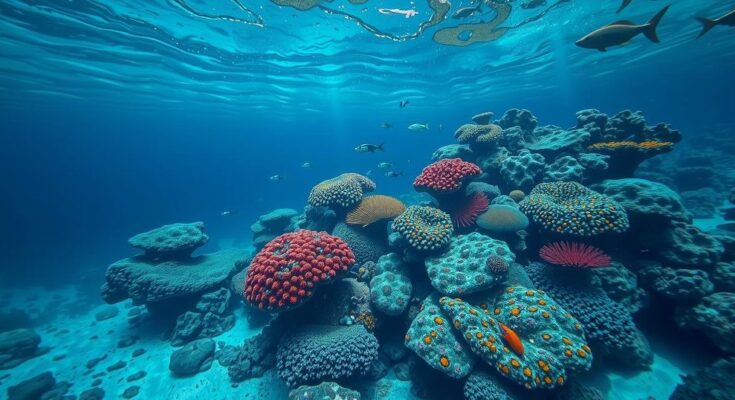A 7.6 magnitude earthquake struck south of the Cayman Islands on Saturday, leading to temporary tsunami warnings that were later canceled. Social media gained traction with claims of an underwater video showcasing the event, which has been unverified and originally belonged to a different incident. Tsunamis typically arise from underwater seismic activity, with the potential for widespread devastation when they reach the shore.
On Saturday evening, a powerful 7.6 magnitude earthquake impacted the Caribbean Sea, specifically south of the Cayman Islands, prompting temporary tsunami alerts in surrounding regions. The United States Geological Survey (USGS) reported the earthquake occurred at 6:23 p.m. local time at a depth of 10 kilometers, approximately 130 miles southwest of George Town, Cayman Islands. Despite initial concerns regarding potential tsunamis, the warnings were later revoked after monitoring showed minimal risk.
The initial tsunami alerts raised alarms for Puerto Rico, the U.S. Virgin Islands, Cuba, and parts of Central America as wave heights varied from 0.3 to 1 meter in some areas, with Cuba experiencing waves of up to three meters (10 feet). By closely observing the situation, authorities declared that subsequent disturbances would be minor. Meanwhile, social media buzzed with claims of an underwater video capturing real-time footage of the earthquake’s effects.
Allegedly, this footage surfaced on various platforms, including X, Facebook, and TikTok, showcasing seabed disturbances, marine creatures reacting to the seismic activity, and sediment being dislodged. However, no official validation of this video has been achieved from reputable sources such as the USGS or the National Oceanic and Atmospheric Administration (NOAA). Further scrutiny revealed that the purported video was, in fact, outdated footage from 2023 recorded by deep-sea divers in the Banda Sea, Indonesia.
Tsunamis generally result from underwater earthquakes that displace large volumes of water; thus, when the seabed shifts rapidly, waves are created. Additional causes can include underwater volcanic activity, landslides, and meteorite impacts. As these waves reach shallower waters, they increase in height and can cause thereby catastrophic effects for coastal regions. They exhibit a remarkable speed and energy across ocean basins, often leading to extensive destruction.
Understanding tsunamis entails recognizing their primary origins. Most commonly, they are triggered by underwater earthquakes that release significant energy, resulting in rapid shifts in water levels. Other natural disasters, such as underwater volcanic eruptions, landslides, or meteorite impacts, also contribute to tsunami formation. As tsunamis approach coastal areas, the interaction with the seafloor causes them to slow down and grow taller, which can lead to devastating consequences when they hit land, necessitating monitoring systems to detect seismic activity.
In conclusion, the recent earthquake near the Cayman Islands prompted an incredible response, though falsely circulated videos claiming to depict its effects misled many. With initial tsunami alarms raised and quickly retracted, this event underlines the importance of verifying information through credible sources. Understanding the mechanics of tsunamis is essential for disaster preparedness and enhancing public safety during such natural occurrences.
Original Source: www.soapcentral.com




